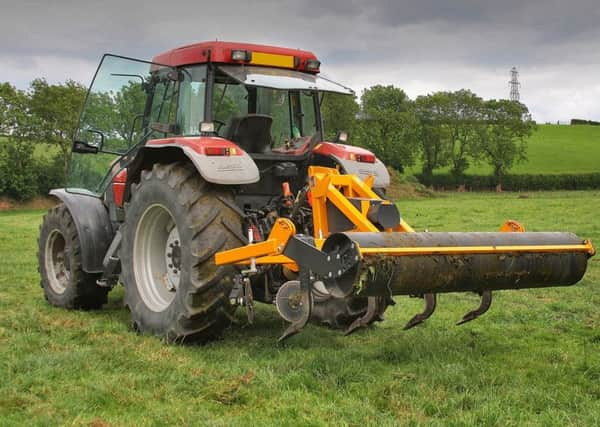DAERA Management Notes: Dairying


A concern you may have when turning cows out to grass is milk yields ‘crashing’. How can you maximise daily yield and remain feed efficient on your farm this spring, when individual cow yield can vary from 15 to 60 litres?
In a spread calving pattern herd batching cows into yield groups will help. Use milk yields to sort cows into groups for:
Grazing full-time
Grazing by day and housing by night
Housing full-time
Advertisement
Hide AdAdvertisement
Hide AdFor the full-time grazing group the ration M+ depends on grass supply and quality. For the partial grazing or full-time housed groups the ration M+ should be formulated so the lowest yielding cow in the group is not overfed. The M+ will change as cows are moved from housing, through partial grazing to full-time grazing.
Currently farms with cows grazing for a few hours after morning milking are topping up in the parlour after the first 10 litres of milk at a rate of 0.45 kg concentrate per litre. Once cows are settled on day time grazing, restrict parlour feeding to cows giving more than 15 litres. Full-time grazing with 7.5 kg of parlour supplementation can provide the nutritional requirements for cows yielding up to 40 litres. Cows yielding more than 40 litres should still have access to blend in a TMR. Aim to have your grazing rotation fully established by the third week in April. Full-time grazing will then provide the nutritional requirement for cows yielding up to 25 litres.
Relieving soil compaction
Now is a suitable time to correct problems caused by soil compaction. Treated fields will give improved productivity and drainage. Dig test holes in affected fields to determine the depth of the compacted layer. Signs to look for include a layer that is hard to break up, shallow roots growing horizontally, few worms, bad smell or grey colour and brown mottling. The depth of the compacted layer determines the type of machine that should be used to rectify the problem. Use a machine that reaches deep enough to lift and loosen the compacted layer when the soil is dry enough to fracture.
Nitrogen for silage
A splash-plate application of 33 cubic metres per hectare (3000 gallons per acre) of cow slurry this February or March will have supplied enough phosphate and potash for first cut silage at typical silage field soil indices. It will also have provided some nitrogen for grass growth. As there is still a major requirement for nitrogen fertiliser apply up to a further 100 kg of nitrogen per hectare (80 units per acre) to fields for first cut.
April jobs checklist
Advertisement
Hide AdAdvertisement
Hide AdPrepare for the forth coming breeding season. How good are your heat detection rates? Can these be improved?
Have you selected suitable bulls to achieve your long term breeding goals?
Assess condition of young stock, especially maiden heifers. Will they be in the right condition for service?
Have you adjusted time clocks now the time has changed?